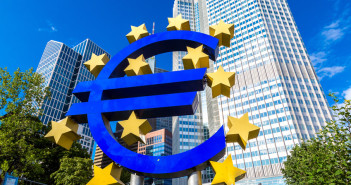EUR/USD has been very stable of late, but it now faces the ECB and Draghi. What does this imply?
Here is their view, courtesy of eFXnews:
We expect a dovish tone from Draghi at the ECB meeting this week, but no new measures. Despite the comprehensive package of easing, which was announced in March, the ECB is still under pressure to ease again as inflation expectations remain around a historically low level, while the effective euro has strengthened following the easing from the ECB.
We believe Draghi will re-open the door for additional rate cuts after stating at the latest meeting in March that he did not anticipate more rate cuts. Draghi is likely to do this by emphasising the ECB’s forward guidance stating that policy rates are expected to ‘remain at present or lower levels for an extended period of time’.
A renewed focus on cutting policy rates should not be a big market surprise, as the ECB minutes revealed that ‘the Governing Council would not rule out future cuts in policy rates, as new shocks could change the outlook for inflation’. Generally, market expectations ahead of this ECB meeting are not very high, but looking further ahead additional rate cuts are priced in with a probability around 50% in September.
On the FX side, soft words from Draghi support our view that the ECB may see some temporary relief from a weaker EUR/USD. Much less stretched short positioning in the cross leaves room for relative rates to play a role in the cross again in 1-3M and we see potential for ECB-Fed divergence to see a short-lived return.
Further details about the TLTRO II loans will also be in focus. In particular, more information about the lending benchmark, which determines whether the lending rate will be positive or negative, will attract attention. The potential size and maturity of the TLTRO II loans are already known and banks are allowed to take four times the amount taken on the TLTRO I, see ECB’s very attractive TLTRO II loans, 18 March 2016.
The first weekly QE data after the up-scale to EUR80bn in the monthly QE purchases showed a clear increase in government bond purchases. The additional purchases were achieved entirely through higher public sector purchases and Draghi is likely to be asked whether this pattern will continue going forward. The ECB minutes stated that liquidity in the covered bond market was ‘currently rather reduced’, which could suggest the ECB prefers public sector purchases.
Despite soft words from Draghi, we expect the ECB to remain on hold over the coming months while it waits to see the effect of its recent policy initiatives. The first TLTRO II auction and the purchases of corporate bonds will not start until June, which should keep the ECB sidelined for some time.
In a longer term perspective, we expect the ECB to extend the QE purchases beyond March 2017. This should follow as inflation in our view will not pick-up sufficiently for the ECB to remain on hold. We do not expect additional rate cuts, but a strong appreciation of the effective euro could force the ECB to cut again.
For lots more FX trades from major banks, sign up to eFXplus
By signing up to eFXplus via the link above, you are directly supporting Forex Crunch.
